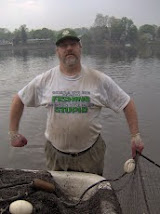HELLFIRE PASS  |
| The bridge over the River Kwai |
We knew Thailand’s role
in the Second World War would come up during our travels here and so we did
some research by watching the film, The Bridge on the River Kwai. Starring
Sir Alec Guinness and William Holden, the David Lean film won several Oscars
and was about the British helping build an integral link on the Siam-Burma
Railway during WWII.
The film was slammed by
those who lived through the ordeal as not coming close to the appalling working
conditions and extremely cruel treatment by the Japanese. Australian, British, Dutch
and some American POWs and more than 200,000 indentured local civilians worked
and died building what was dubbed the Death Railway.
 |
| bridge over the River Kwai |
It is estimated that 20
men died each day, succumbing to malnutrition and disease, exhaustion, no
medical treatment and ferocious beatings by the Japanese guards. Though the
film won several Oscars and was a good start in learning something about this
part of history, it failed to prepare us for the extreme sadness we experienced
on our next stop on our recent tour of Thailand.
DEATH RAILWAY |
| Kanchanaburi War Cemetery |
The railway is still
active as a tourist transport from Bangkok to Kanchanaburi, where the bridge over
the River Kwai was built. There were two bridges erected at this now idyllic
town lined with cafes and restaurants.
The first bridge was wooden and could carry
light diesel rail trucks to transport construction
materials while a reinforced concrete bridge was built 100 meters away. That bridge used repurposed metal sections the Japanese took from Java.
Both bridges were bombed mercilessly by the
Allies, and despite the cost of human lives the Death Rail, that was meant to
serve as a land route to move supplies as the U.S. choked off sea lanes, only carried
two Japanese divisions and just 500,000 tons of supplies before VJ day ended
the war in Asia. |
| Kanchanaburi War Cemetery |
Because of the
popularity of the film though the bridges became a major tourist attraction,
and a tourist train will cross the river and travel to Nam Tok Sai Yok Noi
where it ends. Nearby is the Sai Yok Noi park and waterfall where families come
to escape busy Bangkok and to enjoy nature. In this park there is a replica of the metal bridge that is a pedestrian path and a small market catering to visitors.
The metal bridge itself
is a popular tourist destination and pedestrians can walk on it over the river,
even when the train slowly makes its way across.
AT WHAT COST?
 |
| Hellfire pass Interpretive Ctr |
It is estimated that 16,000
Allied POWs and over 90,000 civilians forced into labor by the Japanese died in
building the railway. Many were buried near where they fell. After the war the
bodies of Australian, English and Dutch POWs were reinterred in several
cemeteries. On our way to the bridge where we had lunch at a restaurant
overlooking the infamous span, we first stopped to pay our respects at the
Kanchanaburi War Cemetery. There are approximately 5,000 soldiers from the
Commonwealth and 1,850 Dutch casualties commemorated at Kanchanaburi. There are
two other military cemeteries honoring those who perished building the Death
Rail. Chungkai is in Thailand and Thanbyuzayat is in Myanmar (Burma).
HELLFIRE PASS
 |
| Hellfire Pass |
After the war much of
the railway was abandoned and even ripped up and the jungle took over the
remnants, but in the 80’s veterans returned to the area to look for the sites
that caused them so much duress in their youth. They eventually found the
cutting called the Hellfire Pass.
It was 75 meters long and 25 meters deep
through solid rock. Working 18 hours a day through the night with torches
lighting their work with just rudimentary tools, the scene of the Allied and
indentured servants looked like a scene straight out of hell. It took six weeks to complete and workers died from exhaustion and disease, accidents and
beatings by the Japanese.
One veteran, Tom Morris, who helped clear the Hellfire Pass from underbrush, approached the Australian government so as to preserve this infamous site. Eventually the Hellfire Pass Interpretive Center and Memorial Walking Trail was
created.
 |
| Hellfire Pass |
It was dedicated on ANZAC Day, April 25, 1998 and the center and
memorial walk are sobering reminders of the horrors the men went through. As
part of our visit, we listened to an audio tour and walked the cutting where mementos
of heroes past lined the steep walls.
To read more about the
Hellfire Pass go here: HELLFIRE PASS
GLAMPING AMID THE
HORROR
Because of the tragic
history of the area, it was almost embarrassing to enjoy luxury “glamping” at
the Hintok River Camp @ Hellfire Pass. We stayed in spacious air-conditioned
tents with private baths and a front porch. There was a coffee shop on the grounds,
a natural spring fed pool, and a floating patio with sunbeds to hang by the
river to enjoy the views. We had buffet-style dinners in the open air and there
was a full bar and staff waiting for our drink orders.
 |
| Hintok River Camp |
We stayed at the Hintok
River Camp for two days, traveling there after Kanchanaburi and using it as a base for
an excursion to the Interpretive Center and Memorial Walk and then a longboat
ride down the Kwai passing water buffalos and other even more luxurious bungalows
floating on the river to have lunch at a restaurant in Nam Tok where a flaming
dish of morning glory, Thai water spinach, was as entertaining to watch being
prepared as it was delicious to eat.
This has been quite the
trip.
Thanks for reading.
Love Janet and greg
 |
| our tent at Hintok River Camp |
 |
| River Kwai at Hintok River Camp |
 |
| Hintok River Camp |
 |
| Hellfire Pass |












































No comments:
Post a Comment